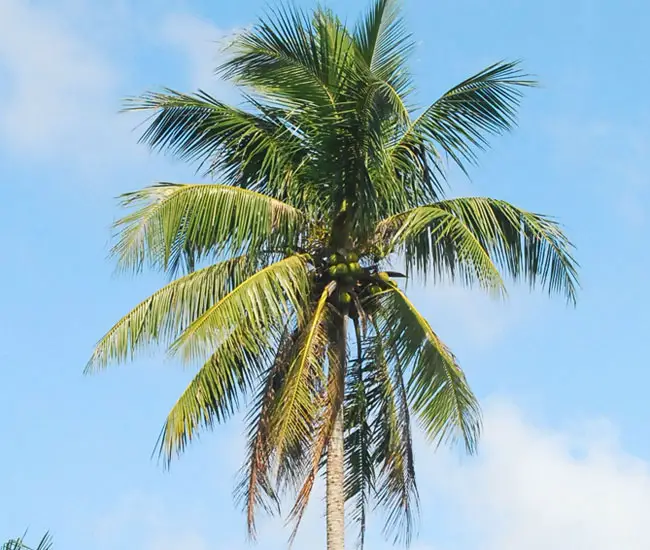
The Coconut Palm Tree, scientifically known as Cocos nucifera, is one of the most renowned palm species globally, celebrated for its prized fruit, the “coconuts.”
Coconut oil, derived from its fruit, finds extensive use in both culinary and various beauty products. These remarkable palms have a lifespan that can extend up to 100 years, continuing to produce fruits until they reach around 80 years of age.
Native to the Malay Archipelago and the South Pacific, it’s important to note that the Coconut Palm is not indigenous to the United States, despite common misconceptions.
However, it is one of the two palm species that have successfully naturalized in the United States, with many mistakenly believing it to be native to Florida and Hawaii.
Quick Facts:
| Scientific name: | Cocos nucifera |
| Common names: | Malayan Coconut Palm, Coconut Palm, Green Malayan Palm. |
| Origin: | Native to the Malay Archipelago or the South Pacific. |
| Growth Rate: | Moderate. Up to 20-30 ft tall and 5-10 ft wide |
| Cold Tolerance: | USDA Zones 10b (35 – 40 F) to 11 (above 40 F). |
| Light Req: | Full sun. |
| Water Req: | Moderate. |
| Soil Req: | Widely adaptable |
| Fruit: | Yes. Green, yellow, orange, brown. Edible. |
| Propagation: | By seed, germinating in 4-6 months |
Identifying Characteristics of the Coconut Palm
Cocos nucifera is characterized by a smooth, single gray trunk adorned with old leaf scars. As the palms mature, their trunks become smoother with age, typically displaying a slight swelling at the base and a slight curvature.
The crown of the Coconut Palm is an impressive sight, featuring 25-30 pinnate, or feather-shaped, leaves that can grow up to 18 feet in length and 6 feet in width.
These leaves are sizable, measuring about 18 feet long and 6 feet wide, with approximately 200 leaflets, each around 2 feet long. The leaves have a lifespan of approximately 2.5 to 3 years, with mature and healthy palms consistently shedding the oldest leaf each month while generating a new one.
Flowers and Fruits of the Coconut Palm
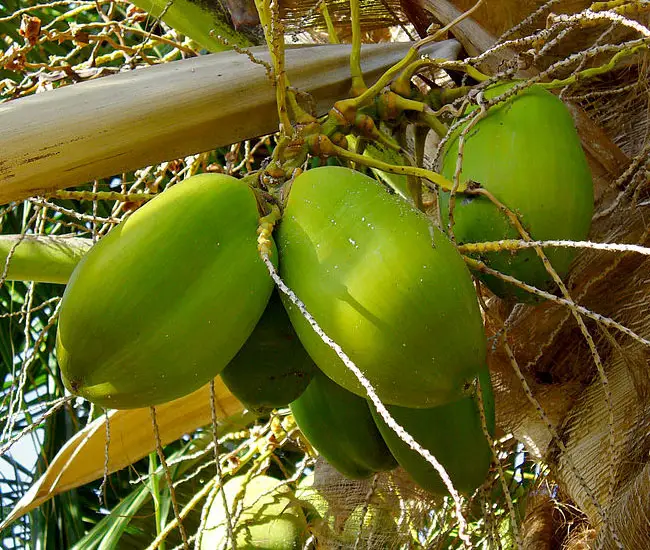
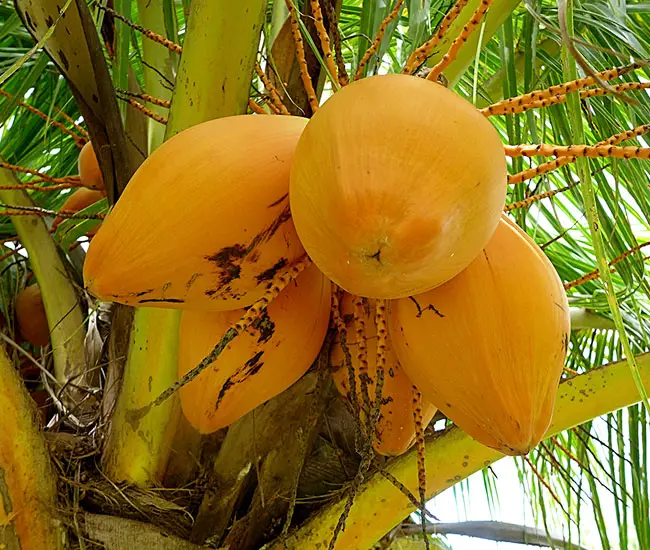
Around the age of 4-6 years and during the spring season, the Coconut Palm initiates the production of sweet-scented yellow flowers. These flowers are clustered together and held by slightly branched stalks. Interestingly, male and female flowers grow on the same inflorescence, with male flowers releasing pollen before the females become receptive.
Following the flowering stage, the Coconut Palm yields its iconic fruit, the “coconuts.” Coconuts are among the most recognizable and versatile fruits globally, known for their varying colors, transitioning from green to yellow, bronze-gold, and finally to brown as they mature.
These fruits are oval, three-angled, approximately 12 inches in length and 10 inches in width, containing a single seed within.
Inside the fruit, there is a nut housing a layer of white coconut “meat” and sweet, watery milk. Remarkably, the seeds of the Coconut Palm are among the largest of any plant species. After maturing, it takes a full year for coconuts to ripen.
Fruit development typically begins when the plant reaches around 6-10 years of age. The Coconut Palm is prolific, bearing fruit throughout the year, with an annual production ranging from 50 to 200 coconuts per palm tree, contingent on various growing conditions and palm varieties.
Caring for the Coconut Palm
In its native habitat, the Coconut Palm can reach towering heights of up to 100 feet, but when cultivated, it typically stands at a more manageable 20-30 feet in height and spans 5-10 feet in width.
The Coconut Palm thrives in warm climates and is sensitive to temperatures dropping below 35°F, which can lead to injury. It finds its ideal growing conditions in USDA Zones 10b (with temperatures ranging from 35 to 40°F) to 11 (above 40°F).
Full sun exposure and well-drained, moist soil are the keys to successful growth, although it can also tolerate drought conditions. Ideally, the average temperature should hover around 72°F, with ample rainfall.
Apart from its aesthetic appeal, this unique palm offers the advantage of being relatively low-maintenance. To prevent nutritional deficiencies, it is advisable to apply high-quality palm fertilizer with a continuous-release formula twice a year during the growing season.
One of the most significant threats to the Coconut Palm is “lethal yellowing,” a perilous disease caused by a tiny organism known as a phytoplasma. Early signs of this disease include premature coconut dropping and the blackening of flower stalks.
As the disease progresses, leaves may turn yellow, beginning with the lower ones and moving upward. Unfortunately, Coconut Palms usually do not survive beyond six months after the first signs of the disease appear.
Coconut Palms can face challenges from various pests, including spider mites, scale insects, palm aphids, and mealybugs.
Coconut Palm Propagation
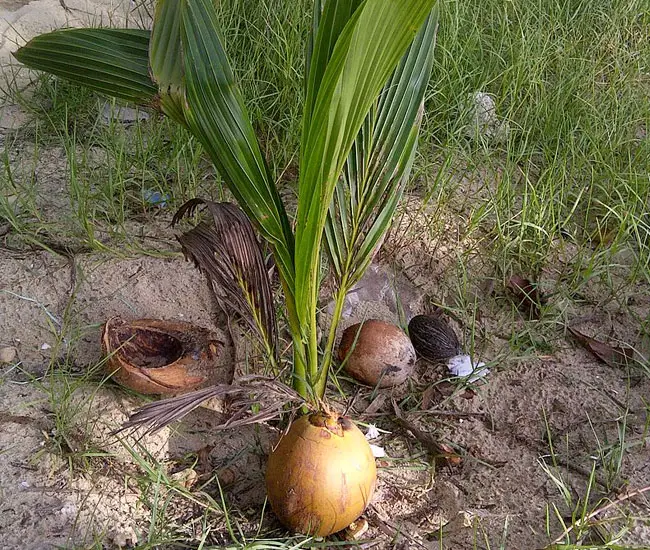
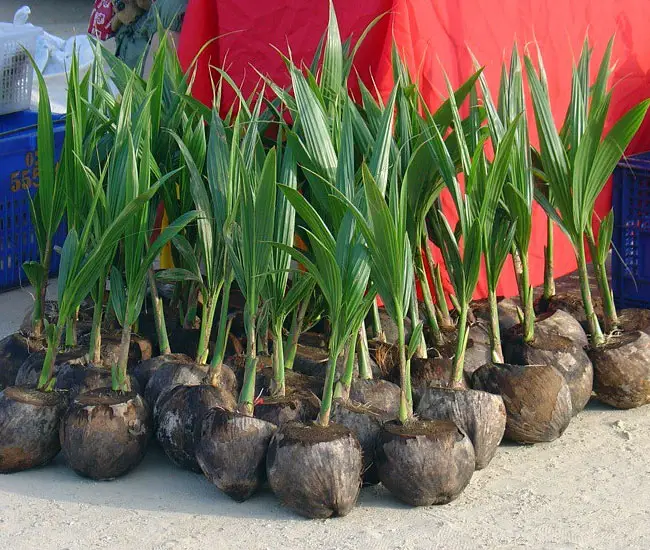
Propagation of the Coconut Palm is typically done through seeds, with germination taking place over 4-6 months. The recommended temperature for expediting germination is around 90-100°F. As the Coconut seed germinates, it breaks through one of the three germinating holes visible on one side of the fruit.
When the plant reaches 6 months of age, it can be transplanted into a pot or yard. Planting can be carried out year-round, but optimal results are achieved during warm, rainy summer months.
Given the preference for sandy soil by Coconut Palms, it’s advisable to add 40% sand to the mix. For potted plants, including some rocks at the bottom can enhance drainage.
Immediate watering after planting is essential, and applying mulch aids in retaining soil moisture while preventing weed growth. Maintaining lightly moist soil is crucial for the palm’s well-being.
Coconut Palm Pictures
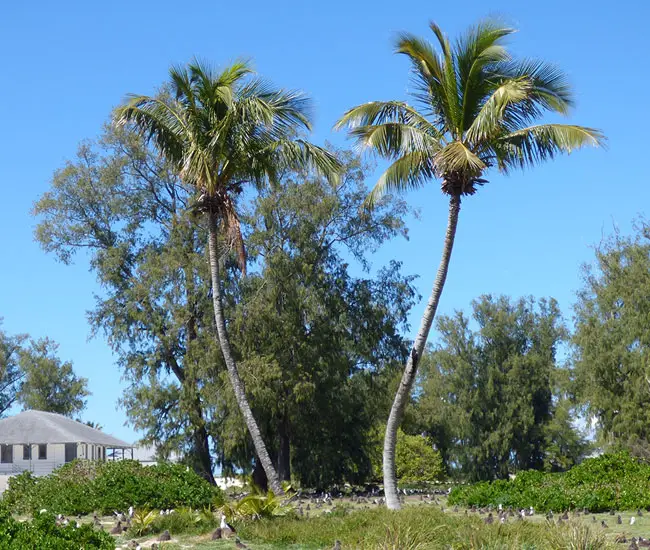
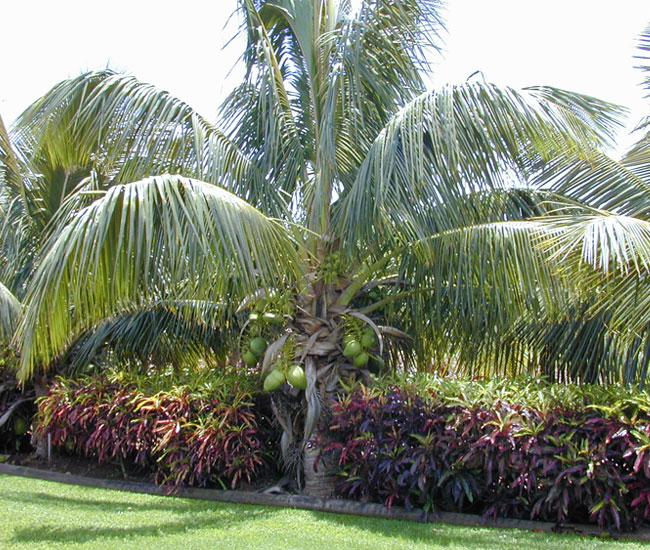
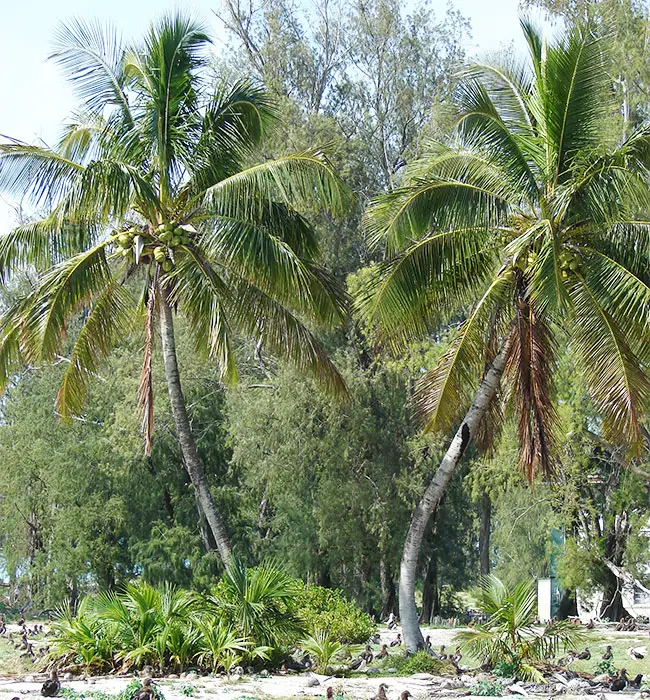
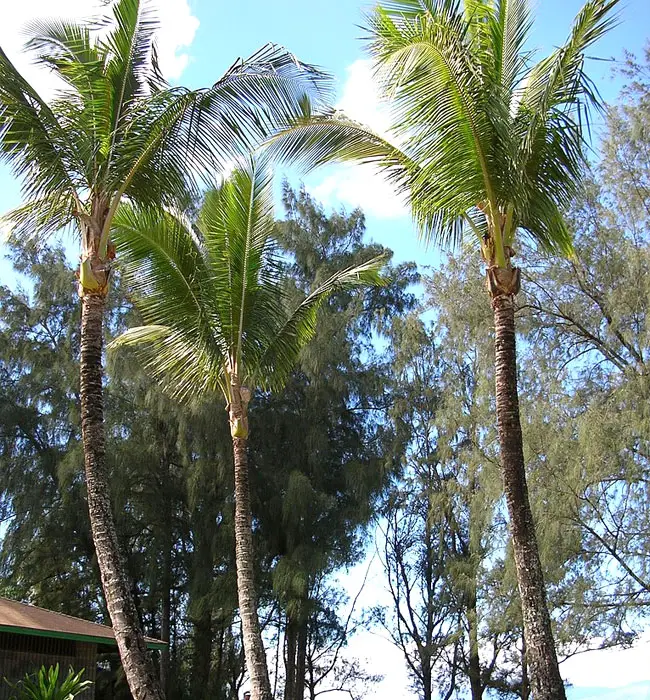
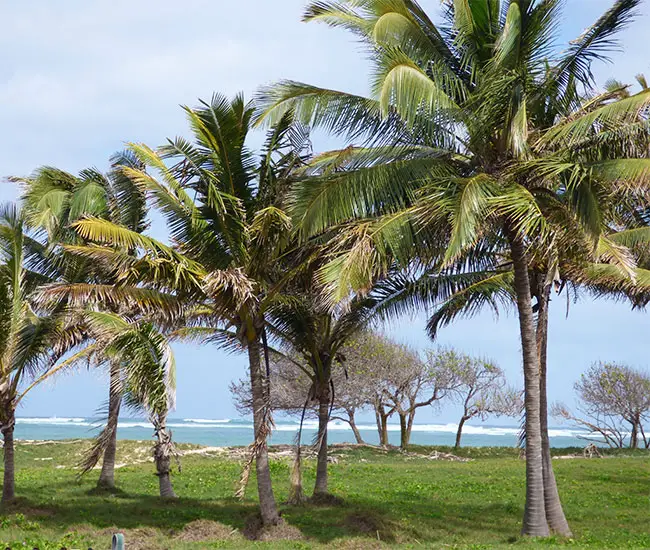
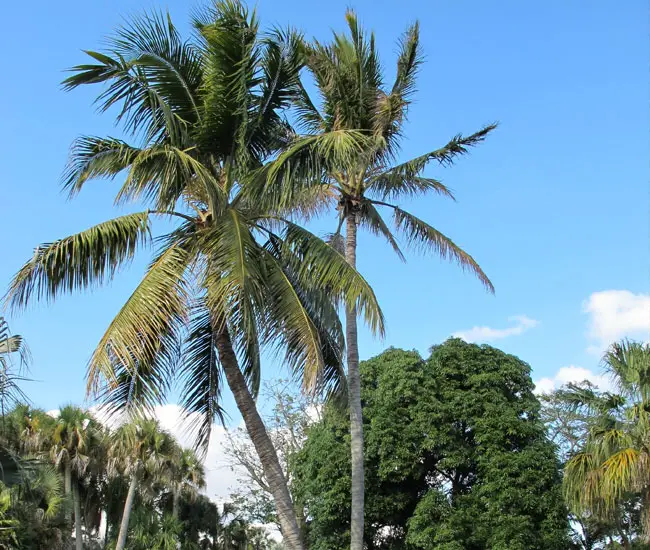
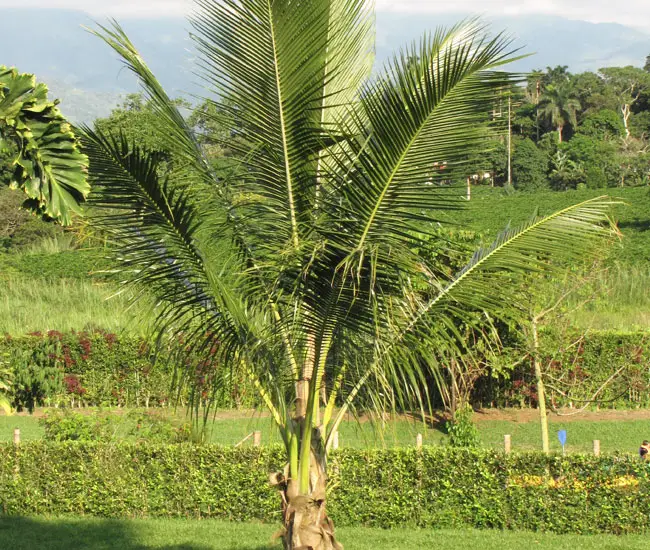
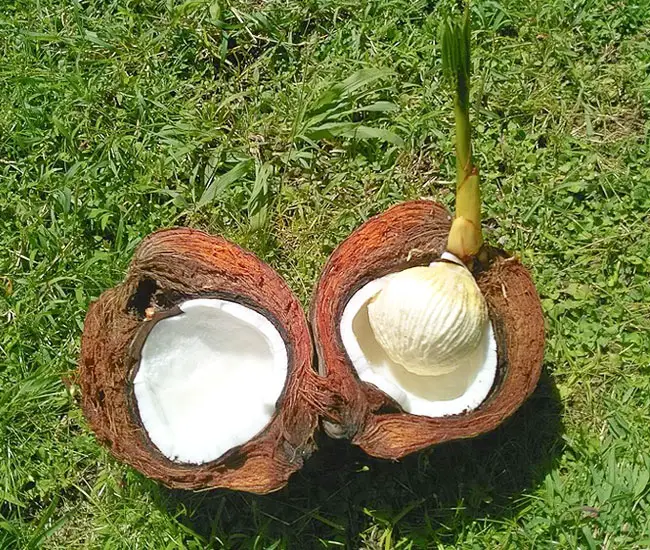
More information can be found on EDIS and Floridata sites.

I don’t know how tough full grown coconut trees are, but babies under 10′ tall of either major variant (tall or dwarf) are most certainly not freeze hardy. They will need to be protected any time sub 40F is in your forecast.